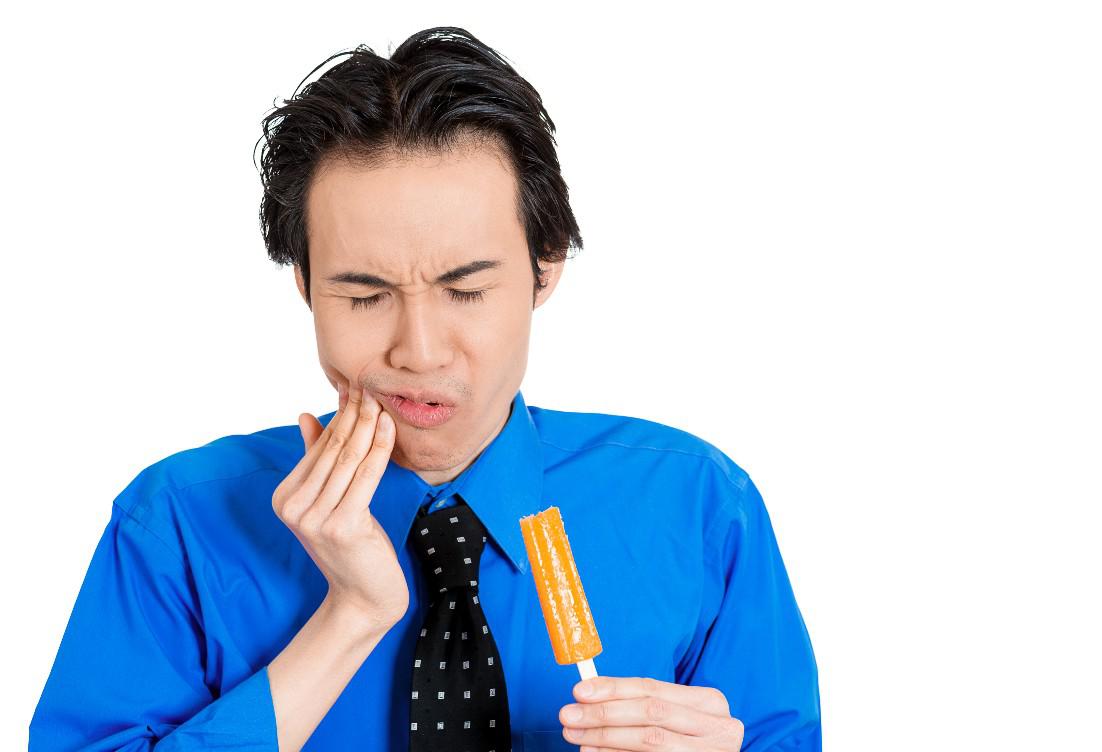 As children, we’re taught that if we don’t take care of our teeth properly – brush daily, floss regularly, and watch our sugar intake - we’ll get cavities. However, as adults, we realize that there’s more to oral health than avoiding cavities alone - enter enamel erosion.
As children, we’re taught that if we don’t take care of our teeth properly – brush daily, floss regularly, and watch our sugar intake - we’ll get cavities. However, as adults, we realize that there’s more to oral health than avoiding cavities alone - enter enamel erosion.
What is tooth enamel?
Enamel is the tooth’s thin, translucent outer layer. Harder than bone, tooth enamel is the first line of defense against decay. It protects the inner, sensitive part of the tooth, called dentin. Without enamel, the inner part of your tooth, which houses thousands of microscopic channels, is exposed and vulnerable to acidic substances, more susceptible to breakage, and can become extremely sensitive and painful.
How do I know if I have enamel erosion?
Enamel loss can show up in various ways, including discoloration, general or localized sensitivity, and teeth that more easily chip or crack.
If your enamel has started to wear away, you might:
- Feel pain or sensitivity when consuming hot, cold, or sweet drinks
- Notice a yellowish discoloration of the teeth
- Find that your fillings have changed
- Have an increased risk of more cavities over time
- Experience tooth loss (in extreme cases)
If you notice any of these symptoms or otherwise suspect that you are experiencing enamel loss, tell your dentist so the issue can be addressed before it progresses.
Can tooth erosion be reversed?
Enamel loss is permanent. However, depending on the cause and severity, weakened enamel may be treated with tooth bonding, crowns, or veneers, which protect the tooth and enhance its cosmetic appearance.
Enamel might also be strengthened through remineralization. This process uses products with fluoride, such as fluoridated toothpaste and mouthwash, to replace lost minerals and strengthen the enamel. The fluoride acts as a barrier between your teeth and harmful substances like sugars, starches, and acids, protecting the weakened enamel and your teeth.
How can I prevent enamel erosion?
As is often the case with oral health, enamel erosion is far easier to prevent than treat. In fact, your daily routine plays a significant role in preventing the loss of tooth enamel.
Your toothbrush – Using the wrong toothbrush can damage your tooth enamel (and gums). Generally, a soft-bristled toothbrush is best for teeth, as medium and stiff bristles might be too hard on gums and enamel. To maintain your toothbrush’s effectiveness, it’s also important to replace your toothbrush every three months or as soon as it shows wear and tear (i.e., fraying).
When you brush – We tend to think it’s best to brush immediately after eating or drinking, but it really depends on what we ate or drank. Brushing your teeth right after a meal is intended to prevent acid attacks; however, this only works if the acid hasn’t already started to attack your tooth enamel. For example, if you’ve just finished consuming something highly acidic, such as citrus fruit, the acid attack will likely be underway when you start brushing. This is problematic since acidic foods and drinks leave tooth enamel soft, and if you brush your teeth before the enamel has hardened, you may end up removing the enamel. To avoid enamel damage, it’s best to wait 30 minutes after consuming acidic foods and beverages before brushing your teeth. By that time, your enamel will be re-hardened and won’t be damaged by your brushing.
What you eat - When it comes to oral health, even “nutritious” foods can be damaging. For example, acidic foods like tomatoes and citrus fruits can have harmful effects on tooth enamel, so it’s best to eat them as part of a meal and not by themselves. Dried fruits, including raisins, can also cause problems because they are sticky and adhere to teeth, which means the acids produced by cavity-causing bacteria continue to harm teeth long after you stop eating them. It can be hard to know what to eat for physical and oral health, but as a general rule of thumb, if what you’re consuming is citrus or citrus-flavored, carbonated, or sour, it’s best to limit how much you consume.
Maintain regular dental visits – While we’re partial, visiting your dentist every six months is key to ensuring that your entire mouth gets a regular cleaning, including those hard-to-reach areas where destructive bacteria can hide. Seeing your dentist at least twice a year also allows them to track potential enamel loss or damage.
If you have questions about tooth enamel erosion or are experiencing any of the symptoms mentioned, please call our team to schedule a visit.

